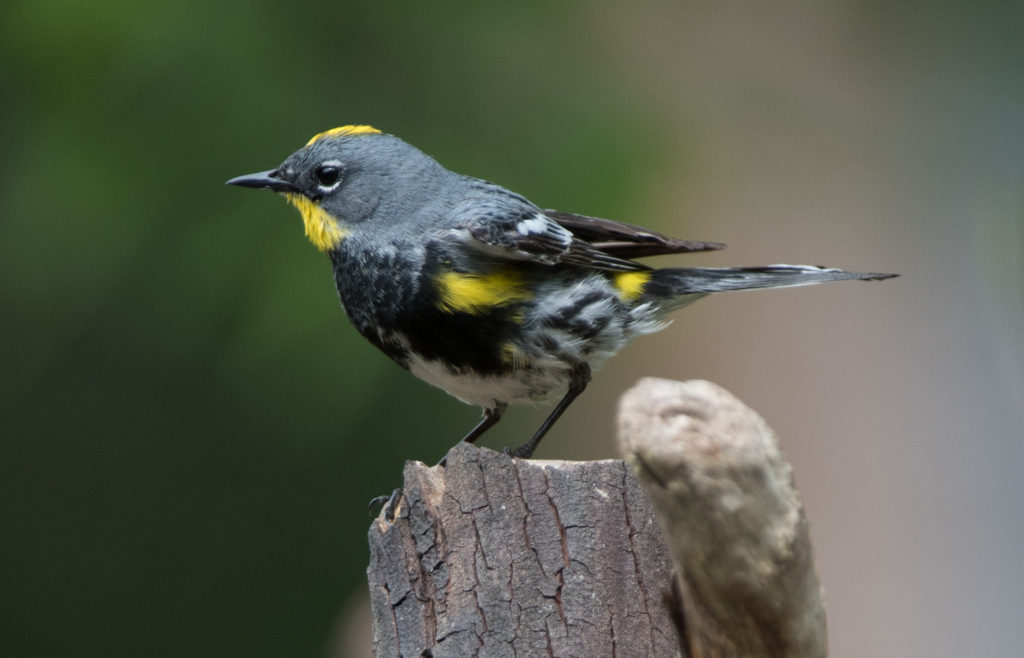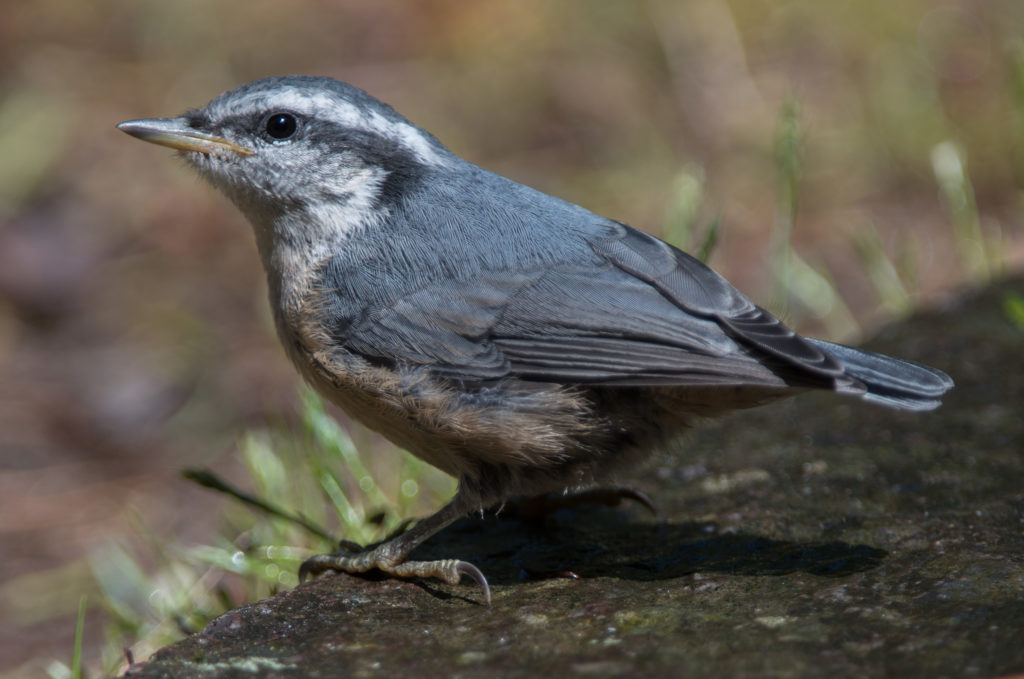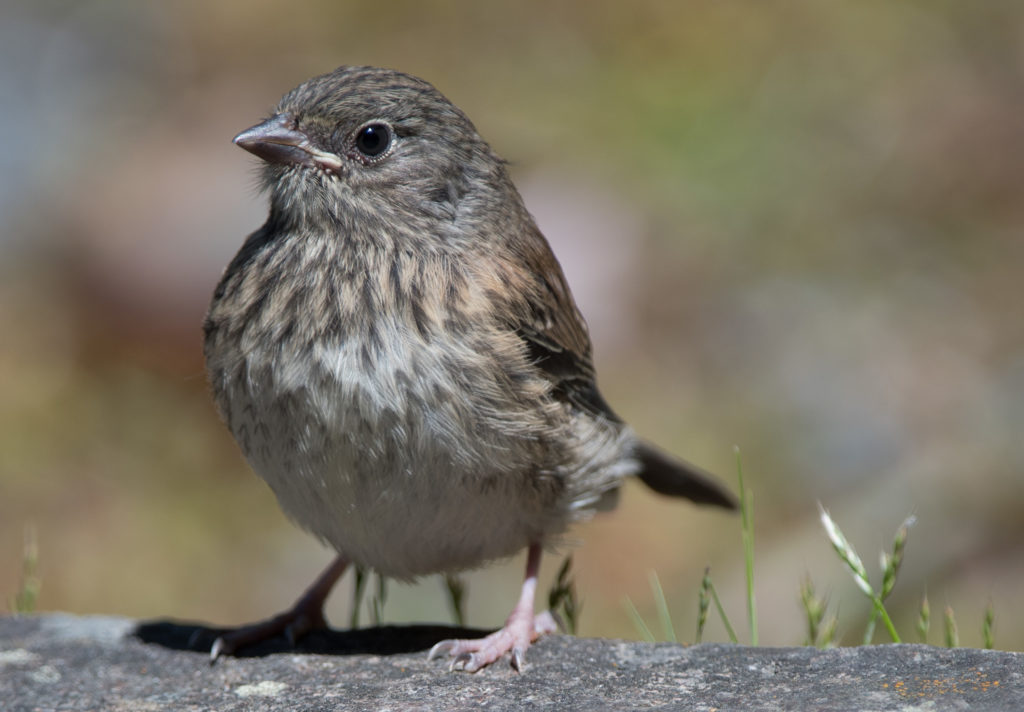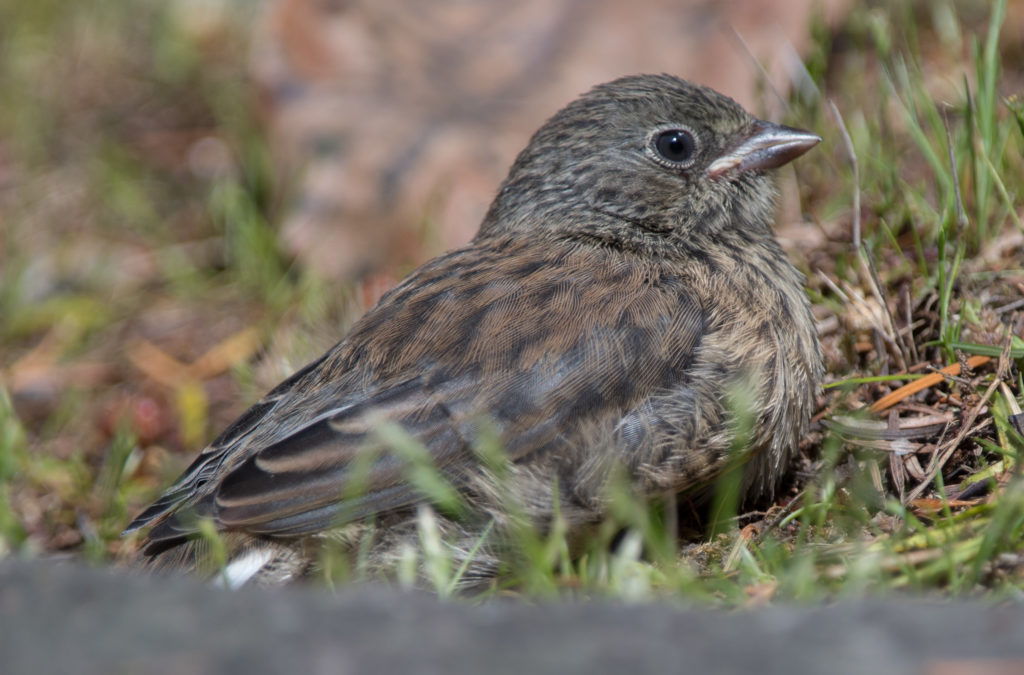There is lots of news from the yard as of late. On the afternoon/evening of Tuesday, May 23 the wind began increasing until by 7-8pm we were in the midst of a full-scale gale… one of the most severe I can remember in the sixteen years we’ve lived here. (Friends and relatives in Bellevue and Oregon seemed to have escaped the phenomenon.) Before dark my wife looked out the kitchen window and told me that I wasn’t going to like what had happened in the yard. I looked out and saw that the trunk of the large madrone tree (~20’ tall), the main bird staging object for the entire yard, had snapped about eight feet off the ground! This was an absolute disaster as far as birding is concerned. The birds used the tree as the major center staging area for the yard and I’ve photographed many birds in that tree. Now it was gone!
I carefully inspected the tree the next day (Wednesday, May 24) and determined that if I cut off about the bottom six feet of the top of the tree I might be able to salvage it for a non-living staging structure adjacent to the watercourse, and over the next few hours that’s exactly what I did. (I have photos of all of this but unless you are familiar with the yard you wouldn’t be able to notice the changes.) The loss of the madrone tree has changed the fundamental birding traffic flow in the yard and I’m still trying to adjust.
Early in the day (Wednesday, May 24) we had a visit from a MacGillivray’s warbler, and late in the afternoon when I was involved in my salvage/clean-up project the warbler returned. Very unfortunately I wasn’t able to get a photo of the bird on either visit. However, after the project was mostly finished, I had a visit from a Wilson’s warbler and another, which I managed to photograph, from a male Yellow-rumped warbler (Audubon’s race) which actually used the new staging tree and which I managed to photograph.
On a more positive note, while in the yard this afternoon (Thursday, May 25) a pair of Osprey made several over-flights and during one the Osprey was dangling a stick about two feet long.
I counted seven male American goldfinches in the yard on May 24 and that wasn’t all of them. Since there would have presumably been at least an equal number of females that puts our count at 20 or above. Today I saw and photographed a young goldfinch being fed.
While I’m on the subject of juveniles, we had an adorable (independent) Red-breasted nuthatch in the yard and at least two juvenile Dark-eyed juncos (Oregon race) also operating somewhat independently in the yard. I saw one of the juncos being fed but they weren’t all following their parents around and one took the opportunity to take a very leisurely bath in the bottom of the watercourse.




